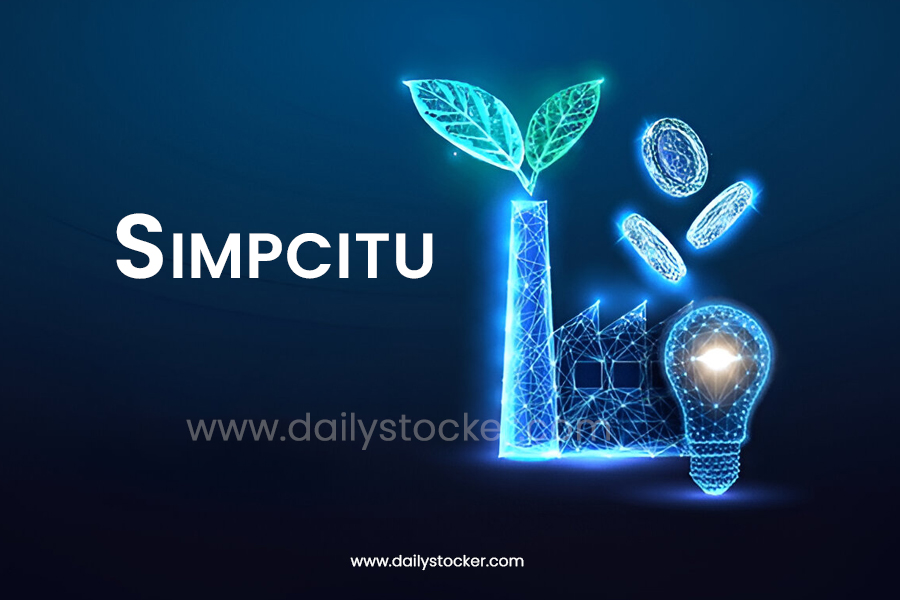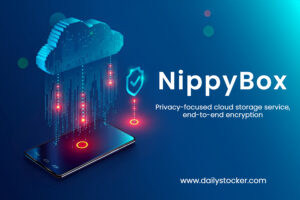Simpcitu: Meaning, Origin, and Cultural Impact in the Digital Age
Simpcitu is a modern digital-age term that blends creativity, innovation, and cultural identity into a single expression. Unlike older slang that fades quickly, simpcitu has been gaining relevance as a way to describe originality, forward-thinking ideas, and the unique way people present themselves online.
From usernames and hashtags to branding and community-building, simpcitu has become a keyword of the digital generation. In this article, we’ll explore the meaning, origin, cultural relevance, and future potential of simpcitu, while uncovering how it reflects the evolving world of creativity and technology.
What is Simpcitu?
At its core, simpcitu is more than just a trendy word—it represents a new mindset shaped by innovation and digital identity. People use it to convey creativity, individuality, and the spirit of standing out in a crowded online world. Unlike traditional terms, which usually have one fixed meaning, simpcitu is flexible and dynamic. It can describe a person’s style, a creative project, or even an idea that feels fresh and original.
The reason simpcitu has captured attention is that it combines simplicity with uniqueness. In fact, the very structure of the word suggests an easy yet clever approach to modern expression. For online communities, simpcitu is not only a term but also a badge of belonging, signaling that someone is part of a movement focused on originality and authenticity.
The Origin of Simpcitu
The word simpcitu may sound new, but like many digital expressions, it has roots in how people reshape language to fit the internet era. It’s believed to have emerged as part of online creativity, where communities often blend words, shorten phrases, or invent entirely new terms that feel unique. Unlike traditional slang tied to a specific culture or location, simpcitu is fluid—it belongs to the digital generation that thrives on innovation.
Another key aspect of its origin is its association with simplicity and creativity. Many believe that simpcitu may have been coined to represent the idea of keeping things minimal yet impactful. In design, technology, and digital communication, simplicity often drives innovation, and simpcitu captures that balance of being straightforward but powerful.
The Cultural Relevance of it
The popularity of simpcitu highlights how modern culture values creativity, identity, and digital presence. For many, simpcitu is not just a word—it’s a concept that describes how people want to be seen in an increasingly online-driven world. It connects to the idea of standing out, being authentic, and contributing something new rather than repeating the same old patterns.
Culturally, simpcitu reflects the shift toward valuing originality over conformity. In previous decades, trends often spread from mainstream media. Today, however, micro-communities and digital creators drive cultural shifts. A word like simpcitu gains meaning because people actively shape and redefine it in different contexts. That cultural flexibility is one of the reasons it continues to grow in recognition.
Simpcitu and Digital Identity
In today’s digital-first world, identity is not limited to physical appearance or offline achievements. Instead, people carefully craft their online presence through usernames, avatars, hashtags, and personal branding. The term simpcitu ties directly into this process, as it symbolizes the uniqueness and creativity that many individuals aim to showcase on social platforms.
On platforms like TikTok and Instagram, simpcitu-inspired usernames or captions make profiles stand out. In gaming communities and Web3 spaces, simpcitu represents individuality in environments where creativity is celebrated. This connection between the word and digital identity explains why simpcitu continues to gain cultural traction: it allows people to signal who they are in ways that go beyond visuals, reaching deeper into meaning and symbolism.
Simpcitu as a Symbol of Innovation
Another reason simpcitu has become important in digital culture is its strong link to innovation. The word itself feels modern, forward-looking, and adaptable—qualities that are highly valued in creative industries. Innovation today is not just about technology; it’s also about rethinking how we communicate, express ourselves, and connect with others.
Simpcitu embodies this innovative mindset. It suggests simplicity fused with creativity, a combination that drives many of today’s most successful projects in design, tech, and entrepreneurship. Just as minimalism in design creates powerful visual impact, simpcitu reflects the idea that simplicity can lead to groundbreaking ideas.
In short, simpcitu is more than just a buzzword. It stands as a cultural reminder that innovation thrives when creativity and simplicity intersect.
How Simpcitu Spreads Across Platforms
The rise of simpcitu is a perfect example of how language and culture spread in the digital age. In the past, new words or phrases needed years to travel through books, television, or local communities. Today, however, a single post or meme can introduce a fresh term to millions of people worldwide in just a few hours. Simpcitu follows this modern pattern, growing across social platforms through creativity and community-driven sharing.
On TikTok, simpcitu appears in captions, hashtags, and even video challenges where creators experiment with new ideas tied to the term. Instagram uses it in usernames and design-focused communities, where people value originality and personal branding. Twitter (X) amplifies the spread by encouraging conversations and debates around the meaning of simpcitu, allowing users to redefine it constantly. Even Discord servers and online forums have embraced simpcitu as a word that signals individuality and innovation.
The Psychology Behind Simpcitu
Language is powerful because it doesn’t just describe reality—it shapes how people think and connect. The psychology behind simpcitu lies in its ability to trigger emotions of uniqueness, creativity, and belonging. People naturally want to stand out while still being part of a community, and simpcitu captures that balance perfectly.
When someone uses simpcitu in their online persona, it signals individuality. At the same time, others who recognize or adopt the term feel connected to a larger cultural movement. This dual effect—personal identity and collective belonging—explains why simpcitu resonates so strongly with digital-first audiences.
Psychologists studying online behavior often emphasize the importance of novelty. Humans are drawn to things that feel new, original, or unexpected, and simpcitu delivers exactly that. Its unusual structure makes it memorable, while its cultural associations make it meaningful. For younger generations, especially Gen Z, simpcitu taps into the deep desire to be both authentic and innovative in a rapidly changing world.
Simpcitu in Branding and Marketing
In today’s competitive marketplace, standing out is no longer optional—it’s essential. Businesses, startups, and personal brands constantly search for fresh ways to capture attention. This is where simpcitu finds its place in branding and marketing. The word itself carries the qualities that modern brands strive to project: originality, simplicity, and memorability.
Marketers know that audiences are more likely to remember a unique name or phrase than something generic. By using simpcitu, companies or individuals can position themselves as innovative, culturally relevant, and forward-thinking. A brand built around simpcitu naturally communicates creativity and uniqueness, qualities that attract younger, digitally savvy audiences.
Some businesses experiment with incorporating terms like simpcitu into their campaigns, either as slogans, product names, or hashtags. On social media, where trends spread quickly, this type of language becomes a powerful branding tool. A hashtag like #simpcitu, for example, can instantly associate a product with originality and creative thinking.
Criticism and Misunderstandings
Like any emerging cultural term, simpcitu is not without its critics. Some dismiss it as just another piece of internet slang, believing it lacks substance or longevity. Others argue that because the word does not have a fixed definition, it can create confusion or be misused in different contexts.
However, these criticisms often overlook the strength of simpcitu’s flexibility. Language evolves by adapting, and words that can shift meaning often have a longer cultural lifespan. Just as terms like “viral” or “meme” started with niche definitions but later grew into mainstream concepts, simpcitu has the potential to follow a similar path.
Misunderstandings also arise when people expect every new word to fit neatly into traditional dictionaries. In reality, simpcitu represents a cultural shift in how people communicate online. It reflects the creativity of communities rather than the authority of institutions. By embracing that freedom, users of simpcitu are shaping its meaning in real time.
Criticism, therefore, should not be seen as a weakness but as proof that the term is alive and evolving. The debates surrounding simpcitu only strengthen its cultural relevance, as they show that people care enough to discuss and define it together.
The Future of Simpcitu
The journey of simpcitu is still unfolding, and its future looks promising in both cultural and digital contexts. As online communities continue to expand, words that symbolize creativity and originality gain even more importance. Simpcitu is likely to evolve beyond being just a trendy phrase into a cultural marker that represents innovation, individuality, and digital identity.
In the coming years, we may see simpcitu integrated into brand names, creative projects, or even digital platforms that want to capture the spirit of originality. As Web3, virtual reality, and AI-driven experiences continue to grow, simpcitu could serve as a symbolic term for the intersection of human creativity and technological progress.
Generational shifts also suggest that simpcitu will resonate more strongly with younger audiences. Gen Z and Gen Alpha, who are shaping the future of online culture, value authenticity and innovation above all else. For them, simpcitu is more than a word—it’s a philosophy of expressing themselves in ways that feel fresh, unique, and unrestricted by traditional boundaries.
Conclusion
In the ever-changing landscape of digital culture, simpcitu stands out as a term that blends simplicity, creativity, and identity. From its flexible origins to its growing cultural relevance, simpcitu reflects how language evolves to meet the needs of modern communities. It is more than just a catchy expression; it is a symbol of innovation, a marker of individuality, and a tool for branding in an age where originality matters most.
The rise of simpcitu highlights a larger truth about language and culture in the digital era: people are constantly searching for new ways to express themselves. Whether it appears in usernames, hashtags, or marketing campaigns, simpcitu will continue to inspire curiosity, creativity, and connection. Its adaptability ensures that it won’t fade quickly but instead evolve with each new wave of technology and culture.
As we look to the future, simpcitu represents more than just a word—it represents a mindset. A mindset that values simplicity while embracing innovation, one that will continue to shape digital identity and creative expression for years to come.
Don’t miss out on any news—keep in touch for real-time information, visit Daily Stocker.
Share this content:








Post Comment